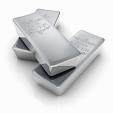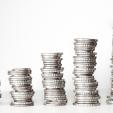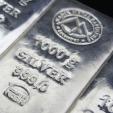Silver Institute: India Plays Prominent Role In Global Silver Market
New Delhi-India (Sept 27) long known as one of the two biggest gold consumers in the world – is also an important silver buyer, with jewelry and silverware demand more than doubling during this decade, said the Silver Institute in a report Wednesday.
The Washington D.C.-based organization released a study on the country’s silver market, with the data compiled by the precious-metals consultancy Metals Focus. India is the world‘s seventh-largest economy.
“This report underscores India’s prominence in the international silver market. The country’s importance is poised to evolve even further as its economy grows and incomes rise,” said Michael DiRienzo, executive director of the Silver Institute.
India consumed 160.6 million ounces of silver in 2016, accounting for 16% of global silver demand, according to the report. Between 2010 and 2016, India imported some 990 million ounces of refined silver.
Silver jewelry and fabrication account for more than half of Indian silver demand annually, the report said. Typically, silver jewelry is purchased by most income groups in India, whereas silverware is bought by the middle and affluent classes. Since the start of this decade, there has been a large expansion of demand in both markets, from around 39 million ounces in 2010 to 88 million in 2016, according to the report. The Indian silverware market is the largest in the world, accounting for 70% of total global demand.
Meanwhile, Indian investment demand for silver saw an unprecedented rise earlier this decade, the Silver Institute said. Physical investment surged from 25.7 million ounces in 2010 to a record high of 110 million in 2015, before Indian coin and bar demand fall by around 70% last year due to higher silver prices and the government’s clampdown on unaccounted money.
On the supply side, Indian mines produced 14 million ounces of silver in 2016, making the country the 14th largest silver producer globally, according to the report. Indian recycling has fallen steadily over the last six years, with volume down by almost 80% from 16 million ounces in 2010 to 3.4 million in 2016. This lower scrap supply was primarily due to the slowdown in Indian economic activity, according to the report.
KitcoNews












